
Road markings are essential for guiding drivers on rules and regulations on the roads. Understanding these markings is crucial for knowing when to overtake, when stopping is required or prohibited, and determining right of way.
They also assist in lane guidance at roundabouts and help maintain a safe driving position. This knowledge is vital for all drivers, whether you’re preparing for your theory test, refreshing your skills for the practical exam, or simply filling in gaps in your understanding.
Understanding Common Road Markings
The UK employs a variety of road marking designs, but they share common themes to ease the learning process. By focusing on one section at a time, you’ll quickly become familiar with the different types of markings and their meanings.
For Learners and Seasoned Drivers Alike
Whether you’re a learner driver studying for your theory test, looking to polish your skills for the practical exam, or an experienced driver needing to update your knowledge, this guide is designed to cover all aspects of UK road markings comprehensively.
By breaking down the information into manageable sections, you’ll find it easier to grasp the essential concepts and rules that govern road use in the UK.
Lines Across the Road
Understanding the Significance
Lines painted across the road are crucial indicators that require your attention. Whether accompanied by road signs or signals or not, they signal the need to stay alert. As you approach these lines, be prepared to either stop or give way, based on the specific instructions provided.
Stop Lines at Traffic Lights or Police Controls
A solid white line across your lane, when paired with a traffic light, another signal, or occasionally, a police control, denotes the point where you must stop upon instruction, such as when the lights turn red.
It’s also important to familiarise yourself with all traffic light rules, including how to react when an emergency vehicle approaches you while you’re stopped at a red light.
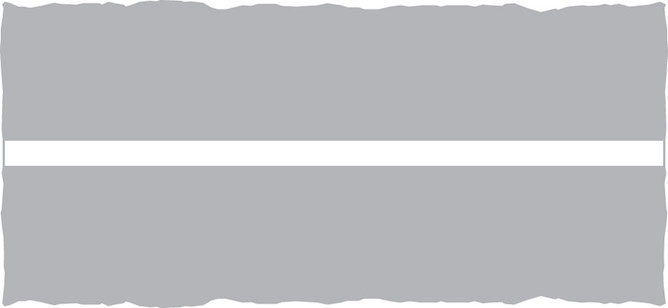
© Crown copyright (Open Government Licence)
Advance Stop Lines
An advance stop line may be present before a traffic light. This line creates a space reserved for cyclists, allowing them to position themselves in front of other traffic.
You should not cross into this area on a red light unless stopping safely before the first stop line isn’t possible.
Junction Stop Lines
At certain junctions, solid white stop lines indicate where you must come to a complete stop. Here, you should check for oncoming traffic from all directions before proceeding when it’s safe.
These junction stop lines are typically paired with an octagonal stop sign to emphasize the need to stop.

© Crown copyright (Open Government Licence)
Broken White Lines: Give Way
A double broken white line signals an approach to a major road where the traffic on that road has priority. In this situation, you must give way; slow down and assess whether it’s safe to join or cross the road.
While a complete stop isn’t always necessary if the way is clear, readiness to stop is crucial if traffic is present or visibility is compromised.
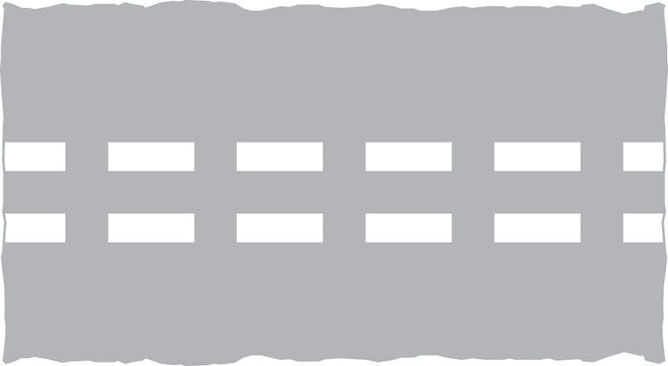
© Crown copyright (Open Government Licence)
Roundabout Give Way Lines
At roundabouts, single broken white lines indicate where you must give way to traffic coming from the right.
The lines at mini roundabouts are typically thicker than those at larger roundabouts but convey the same instruction: vehicles from your right have priority, necessitating caution and readiness to give way.
Centre Line Road Markings Explained
Broken White Centre Lines
Broken white centre lines serve to separate opposing flows of traffic. You are permitted to cross these lines to overtake obstacles or slower-moving traffic, provided there is ample space and you adhere to the speed limit.

© Crown copyright (Open Government Licence)
Variations in Line Length and Spacing
The length of the lines and the spacing between them vary according to the road’s speed limit and the level of hazard a particular section presents.
Where lines are longer than the gaps between them, it indicates a specific hazard ahead, such as a bend, central reservation, or junction, necessitating increased caution when considering overtaking.

Line Dividers
Short broken white lines may also denote lane boundaries on dual carriageways or motorways. It’s essential to keep your vehicle within its lane, and remember to primarily use the left-hand lane unless overtaking.
Remaining in the middle or right-hand lane without need is discouraged and can lead to penalties for middle lane hogging.
Double White Lines in the Middle of the Road
Parking on roads marked with double white lines is generally prohibited, except for brief stops to pick up or drop off passengers, or to load or unload goods.
Double White Lines with a Broken Nearest Line
When the nearest line to you is broken, you may cross it to overtake if it’s safe and clear. However, you should complete your overtaking manoeuvre before encountering a solid white line on your side of the road.
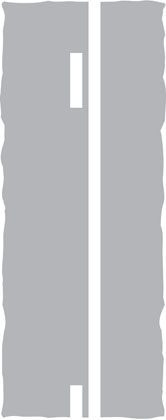
© Crown copyright (Open Government Licence)
Double White Lines with a Solid Nearest Line
Solid white lines signal areas where overtaking is generally unsafe, often due to blind bends or hills.
You may only cross these lines in specific situations, such as turning into a property or side road, or overtaking very slow-moving vehicles like parked cars, cyclists, or road maintenance vehicles travelling at 10 mph or less, ensuring to leave a sufficient gap.
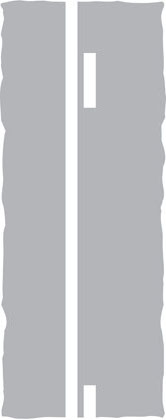
© Crown copyright (Open Government Licence)
Passing Distances
The Highway Code specifies minimum passing distances to ensure safety when overtaking:
- Cyclists: A gap of 1.5m, increasing at speeds over 30mph.
- Horses: A gap of 2m, with a speed limit of 10mph or less.
Double Solid White Lines
Crossing double solid white lines is only permissible in limited circumstances, such as turning into a property or overtaking very slow-moving vehicles.
Doing so unnecessarily or dangerously can result in penalties. If possible, wait for a safer section of the road without solid double lines to overtake.
Parking Lines
Single Yellow Lines
Single yellow line road markings indicate that waiting and parking restrictions apply at specific times, detailed on nearby road signs.
These restrictions cover both the road and the pavement adjacent to it. Blue badge holders are generally permitted to park on single yellow lines for up to three hours during restricted periods, unless double yellow kerb markers are present, which denote further restrictions.
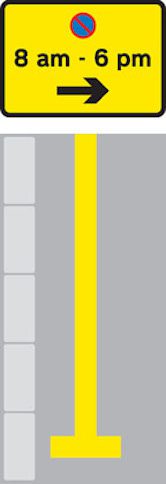
© Crown copyright (Open Government Licence)
Double Yellow Lines
Parking on double yellow lines is prohibited at all times, with few exceptions as indicated by road signs. Blue badge holders, however, may park for three hours at a time, subject to certain conditions.

© Crown copyright (Open Government Licence)
Kerb Markings
Single yellow lines on the kerb signify that loading or unloading is allowed during times specified on road signs.
Conversely, double yellow lines on the kerb strictly prohibit stopping to load or unload, though stopping to pick up or drop off passengers briefly is permitted.

© Crown copyright (Open Government Licence)
Red Lines
In some areas, particularly in London, red routes are enforced where parking restrictions are indicated by single or double red lines.
Single red lines come with signs specifying when waiting is permitted, while double red lines ban parking at all times.
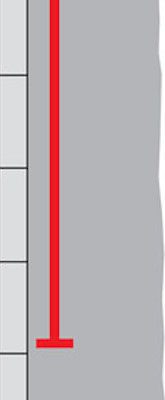
© Crown copyright (Open Government Licence)
Parking Bay Markings
Parking bays, outlined by broken white lines, are often found in residential areas and come with various restrictions.
These bays may be designated for permit holders, require a ticket, or have a time limit on how long you can stay.

© Crown copyright (Open Government Licence)
These restrictions can be permanent or apply only at certain times, as indicated by road signs.
Parking bays with red dashed lines are specific to red routes and are reserved for loading or unloading at designated times, typically with a 20-minute limit.
Named Parking Bay Markings
Certain parking bays are reserved for specific users, such as doctors or police vehicles. These bays are clearly marked on the ground to inform motorists of the reserved status.
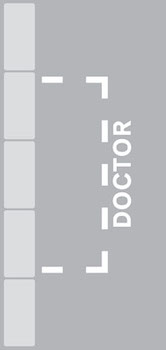
© Crown copyright (Open Government Licence)
Other UK Road Markings
Edge Line
An edge line is a single white line running along the road’s edge, marking its boundary. You should stay to the right of this line to avoid accidents, especially when driving at speed.
Some edge lines may be raised, providing tactile and auditory feedback if your wheels drift onto it, aiding in maintaining a safe road position.

© Crown copyright (Open Government Licence)
Give Way Triangle
The Give Way triangle, an elongated upside-down triangle painted on the road, signifies an approaching junction where you must give way, as traffic on the adjoining road has priority. This marking requires drivers to slow down in preparation to yield.
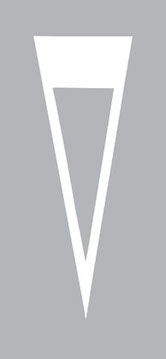
© Crown copyright (Open Government Licence)
Pedestrian Crossings
Stop Lines
Many pedestrian crossings are regulated by traffic lights, featuring stop lines where drivers must prepare to stop when the lights change.
It’s crucial to brake in time to halt before these lines, ensuring safety for both pedestrians and vehicles.
Zebra Crossings
Zebra crossings are easily identified by their wide white stripes on the road, creating a distinctive black and white pattern.
Drivers should check for pedestrians from both directions upon approaching a zebra crossing and must stop before the stripes if pedestrians are waiting to cross or are already on the crossing.
White Zig Zags
White zig zag lines flanking pedestrian crossings are there to prohibit parking, ensuring clear visibility for both drivers and pedestrians. Parking in these areas would obstruct views and potentially endanger both parties.
Areas of Diagonal Stripes and Chevrons
Diagonal Stripes and Chevrons for Traffic Separation
Diagonal stripes or chevrons, marked by either broken or solid white lines, are designed to separate traffic.
When bordered by broken lines, you may cross them if necessary and safe. However, crossing into areas enclosed by solid white lines is prohibited, except in emergencies.
Directions/Indication Lanes
At certain junctions, like roundabouts or motorway exits, you may notice large white arrows, road names, or major destinations painted on the lanes.
These markings supplement directional signs, guiding you to the correct lane based on your intended direction.

© Crown copyright (Open Government Licence)
Slow
The marking ‘Slow’ on the road is a directive to reduce speed. It warns of potential hazards ahead, even if the specific speed limit is indicated by road signs or environmental cues like lamp posts.

Keep Clear
“Keep Clear” markings on the road signal areas where you should not stop, ensuring access for vehicles turning in or out of junctions. It’s crucial to anticipate traffic flow and maintain an adequate gap to avoid blocking these areas.

© Crown copyright (Open Government Licence)
School Keep Clear
Similar to other “Keep Clear” markings, “School Keep Clear” zones prohibit stopping, including for picking up or dropping off children, to ensure safety and accessibility around school premises.

© Crown copyright (Open Government Licence)
Bus Lanes
Bus lanes are marked with ‘Bus Lane’ along their length, and may feature a different coloured surface. They are designated for authorised vehicles, like buses, taxis, and cyclists, with specific operating hours for other vehicles.
Outside these hours, any vehicle may use the bus lane if safe. Crossing into a bus lane is allowed under certain conditions, such as to avoid obstructions or to turn left, provided the bus lane line is broken..

Cycle Lanes
Cycle lanes, marked with a pedal bike symbol and separated by broken or solid white lines, are reserved for cyclists.
Parking in a cycle lane is prohibited unless signs indicate otherwise. Crossing into a cycle lane should be avoided unless necessary, with priority given to cyclists.

Bus Stops
Bus stops, outlined by yellow broken lines and marked with ‘Bus Stop’, are exclusively for buses. Parking within these markings is not allowed to ensure buses can access their stops without obstruction.
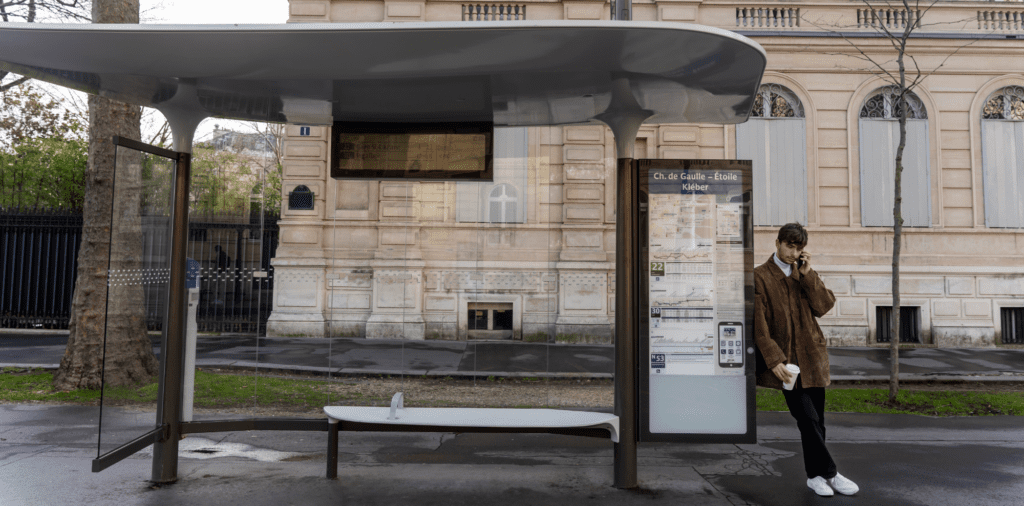
Yellow Box Junctions
Yellow box junctions, marked by yellow boxes with criss-crossed lines, regulate traffic flow and prevent gridlock.
Drivers must not enter these boxes unless their exit path is clear, except when turning right, where they must ensure the path to the right is clear before entering.

Image source: Jeremy Segrott
Chevrons
Chevrons painted on dual carriageways or motorways serve as a distance guide. A sign typically instructs drivers to keep two chevrons apart, aiding in speed and spacing judgement.

Image source: David Dixon
Speed Bump Markings
Speed bumps may be highlighted with a different colour, material, or white arrows to ensure visibility and alert drivers to adjust their speed accordingly.
Understanding these road markings, along with familiarising yourself with various hand signals used by police or authorised personnel, is crucial for safe and informed driving on UK roads.



